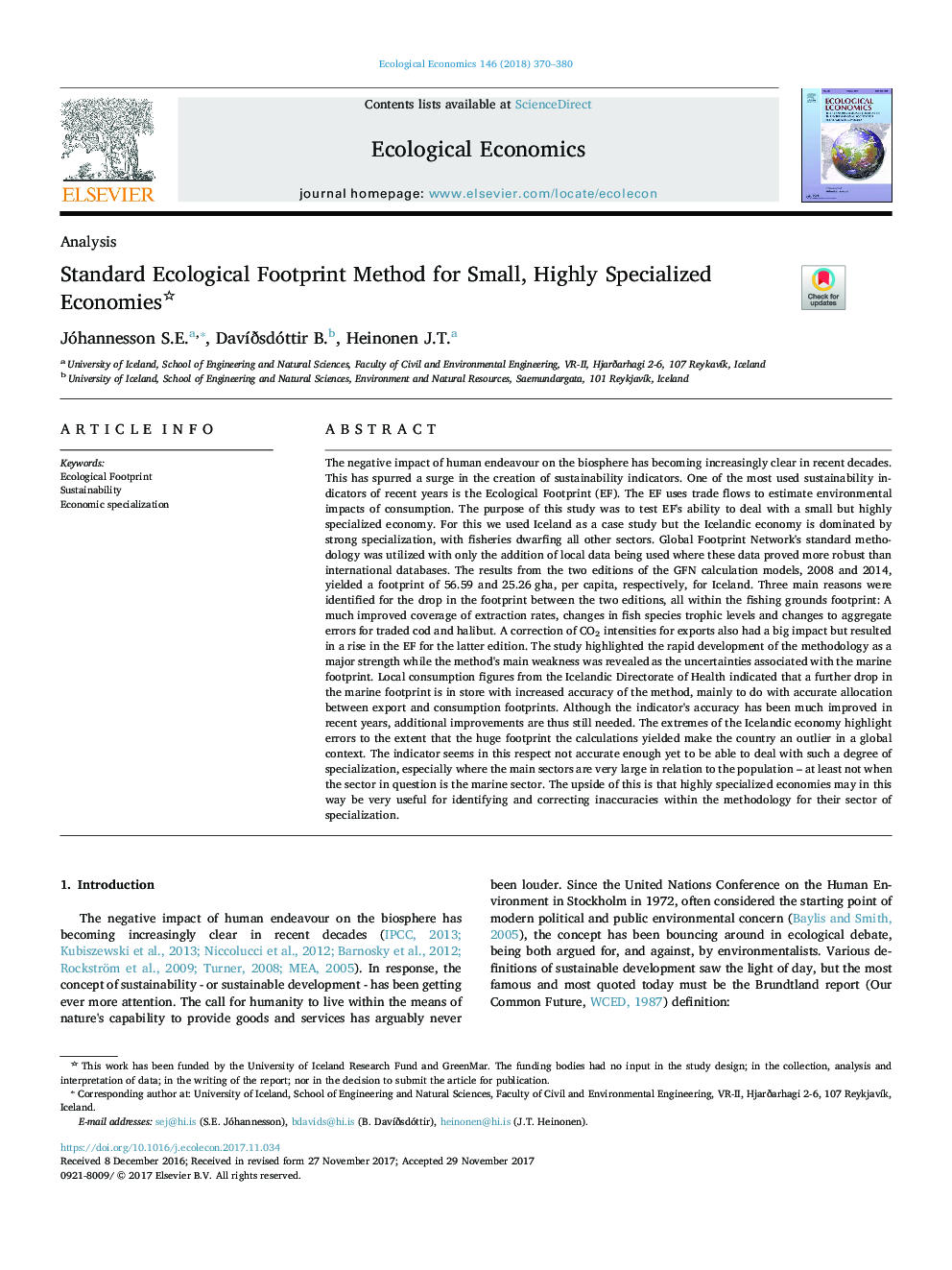| Article ID | Journal | Published Year | Pages | File Type |
|---|---|---|---|---|
| 7344584 | Ecological Economics | 2018 | 11 Pages |
Abstract
The negative impact of human endeavour on the biosphere has becoming increasingly clear in recent decades. This has spurred a surge in the creation of sustainability indicators. One of the most used sustainability indicators of recent years is the Ecological Footprint (EF). The EF uses trade flows to estimate environmental impacts of consumption. The purpose of this study was to test EF's ability to deal with a small but highly specialized economy. For this we used Iceland as a case study but the Icelandic economy is dominated by strong specialization, with fisheries dwarfing all other sectors. Global Footprint Network's standard methodology was utilized with only the addition of local data being used where these data proved more robust than international databases. The results from the two editions of the GFN calculation models, 2008 and 2014, yielded a footprint of 56.59 and 25.26Â gha, per capita, respectively, for Iceland. Three main reasons were identified for the drop in the footprint between the two editions, all within the fishing grounds footprint: A much improved coverage of extraction rates, changes in fish species trophic levels and changes to aggregate errors for traded cod and halibut. A correction of CO2 intensities for exports also had a big impact but resulted in a rise in the EF for the latter edition. The study highlighted the rapid development of the methodology as a major strength while the method's main weakness was revealed as the uncertainties associated with the marine footprint. Local consumption figures from the Icelandic Directorate of Health indicated that a further drop in the marine footprint is in store with increased accuracy of the method, mainly to do with accurate allocation between export and consumption footprints. Although the indicator's accuracy has been much improved in recent years, additional improvements are thus still needed. The extremes of the Icelandic economy highlight errors to the extent that the huge footprint the calculations yielded make the country an outlier in a global context. The indicator seems in this respect not accurate enough yet to be able to deal with such a degree of specialization, especially where the main sectors are very large in relation to the population - at least not when the sector in question is the marine sector. The upside of this is that highly specialized economies may in this way be very useful for identifying and correcting inaccuracies within the methodology for their sector of specialization.
Keywords
Related Topics
Life Sciences
Agricultural and Biological Sciences
Ecology, Evolution, Behavior and Systematics
Authors
Jóhannesson S.E., DavÃðsdóttir B., Heinonen J.T.,
